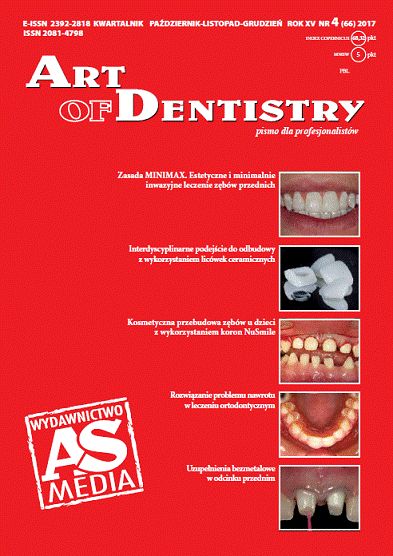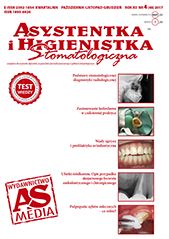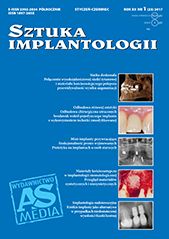 |
Linda Greenwall (BDS, MGDS, RCS, MSc, MRD, RCS FFGDP (Wielka Brytania)) jest specjalistą z dziedziny protetyki stomatologicznej i naprawczej. Prowadzi wielokierunkową prywatną praktykę w Hampstead w Londynie. Jest redaktorem naczelnym magazynu „Aesthetic Dentistry Today”; napisała książkę zatytułowaną „Bleaching Techniques in Restorative Dentistry an Illustrated Guide” (Techniki wybielania w stomatologii protetycznej – przewodnik ilustrowany), za którą otrzymała nagrodę dla najlepszej nowej książki stomatologicznej (Best New Dental Book) w roku 2001. Linda Greenwall prowadzi wykłady na całym świecie – omawia wszelkie aspekty związane z wybielaniem oraz stomatologią estetyczną i naprawczą. Jest również prezesem British Bleaching Society.
|
 |
Białe zmiany i zabiegi wybielające |
|
słowa kluczowe: |
|
| streszczenie: |
Cele kształcenia oraz cele ogólne: U wielu pacjentów na zębach występują białe plamy. U niektórych mogą być bardzo małe, u innych bardzo duże i mogą powodować dyskomfort. Niniejszy artykuł omawia etiologię białych zmian. Czytelnik dowie się, w jaki sposób pojawiają się one na zębach i jak leczyć je w sposób estetyczny, pozna także szczegółowe opcje leczenia. |
 |
White Lesions and Bleaching Treatments
|
| key words: |
|
| summary: |
Educational aims and objectives: Many patients have white markings on their teeth. For some this may be very slight while for others the white markings may be very large and this may cause the patient distress. It is the aim of this article to discuss the aetiology of white lesions and how they occur on teeth and the aesthetic management of these lesions and to discuss detailed treatment options. |








